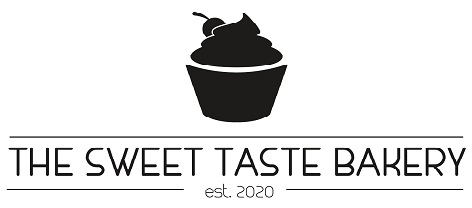10 Common Baking Questions
While baking is an awesome (and delicious) hobby, it’s not always an easy one. In fact, sometimes it can be pretty darn complicated and whether you’re a baking beginner or a pro in the kitchen, we can all get a bit stuck from time to time.
As more people take up baking during the lockdown, I wanted to lend a helping hand and answer some common baking questions and problems I’ve come across recently.
Q: What is the ‘all-in-one’ method?
You’ll probably come across this method in relation to cakes and cupcakes. As the name suggests, you simply add all the ingredients into one bowl and mix them together. It’s a quick and easy method that saves on the washing up.
Q: Is sifting ingredients really necessary?

Sifting may seem like a bit of a faff but it’s actually an important step. First of all, sifting dry ingredients (flour, sugar, baking powder, cocoa powder, etc) gets rid of clumps. No one likes big clumps of flour in the middle of a cake. Sifting also aerates the ingredients and increases the volume, which makes for a much lighter cake.
Q: What is the difference between baking powder and baking soda?
Baking powder and baking soda are both leavening agents that release gas to help baked goods rise. However, there are key differences between the two.
Baking soda – aka sodium bicarbonate – becomes activated when it’s combined with something acidic, such as buttermilk or lemon juice. Once activated baking soda releases carbon dioxide bubbles to help dough or batter rise. In comparison, baking powder is a complete leavening agent which contains both the sodium bicarbonate and the acid needed for cakes to rise.
Q: How can I tell if my cake is done?

One of the best ways to tell if your cake is ready is the toothpick test. Take a toothpick, skewer or cake tester and poke it into the middle of the cake. If it comes out clean, the cake is ready to come out of the oven. Your cake should also be light and springy if you press your finger against it gently.
Q: What is ‘all-purpose’ flour?
This is a very quick one to answer – all-purpose flour and plain flour are one and the same! You’ll most likely see all-purpose flour in American recipes.
Q: How can I turn plain flour into self-raising flour?
If a recipe calls for self-raising flour but you only have plain, don’t panic. To make your own self-raising flour, just add 2 tsp (teaspoons) of baking powder for every 150g of plain flour. Sift them together into a bowl to make sure the baking powder is evenly distributed.
Q: How many grams are in a cup?
Measuring cups are a great tool to have in your kitchen, as a lot of recipes call for ingredients to be measured in cups rather than grams. However, cups measure in volume so you’ll get different results for different ingredients – for example, one cup of flour won’t weigh the same as one cup of sugar. Here’s a helpful conversion table for some key ingredients…
| Cups | Grams |
| 1 cup flour (plain/self-raising) | 125g |
| 1 cup caster sugar | 225g |
| 1 cup butter | 225g |
| 1 cup cocoa powder | 125g |
| 1 cup brown sugar | 250g |
| 1 cup icing sugar | 125g |
Q: What is the difference between granulated and caster sugar?
The main difference between granulated and caster sugar is the size of the grain. Granulated sugar is coarser, whereas caster sugar is finer and dissolves faster, which makes it more popular for baking.
Q: Can I use margarine instead of butter?

When it comes to making buttercream, you should always, always use butter – as the name suggests, it’s pretty important. I have tried using margarine to make buttercream and it was way too thin and just didn’t taste right. I would also recommend using real butter in pastries and cookies as it adds a rich flavour. Margarine can be substituted in the majority of baked goods as it’s so easy to work with and produces really fluffy cakes. It’s important to check the label on your margarine to see if it’s suitable for baking.
Q: How long does a cake stay fresh?
How long your cake lasts depends on a few different factors. If you’ve used fresh fruit or fresh dairy such as cream or cream cheese, you should serve/eat your cake as soon as possible, or at least within 24 hours (if kept refrigerated). Cakes decorated with buttercream frosting can be stored at room temperature for up to three days, while fondant-covered cakes will last for up to five days. Unrefrigerated cakes should always be kept covered, e.g. in a cake box or cake stand, and it’s worth noting that the frosting or fondant will become dry if left for a long period of time. Buttercream and fondant decorated cakes can also be frozen for up to three months. Simply wrap them in cling film and store them in an airtight container.
Have you got any more baking questions? Leave me a comment below or drop me a message here.

Thank you Kirsty I didn’t know the difference between baking powder and baking soda ! Really helpful
This is fab Kirsty! I literally needed the answers to all of these questions!